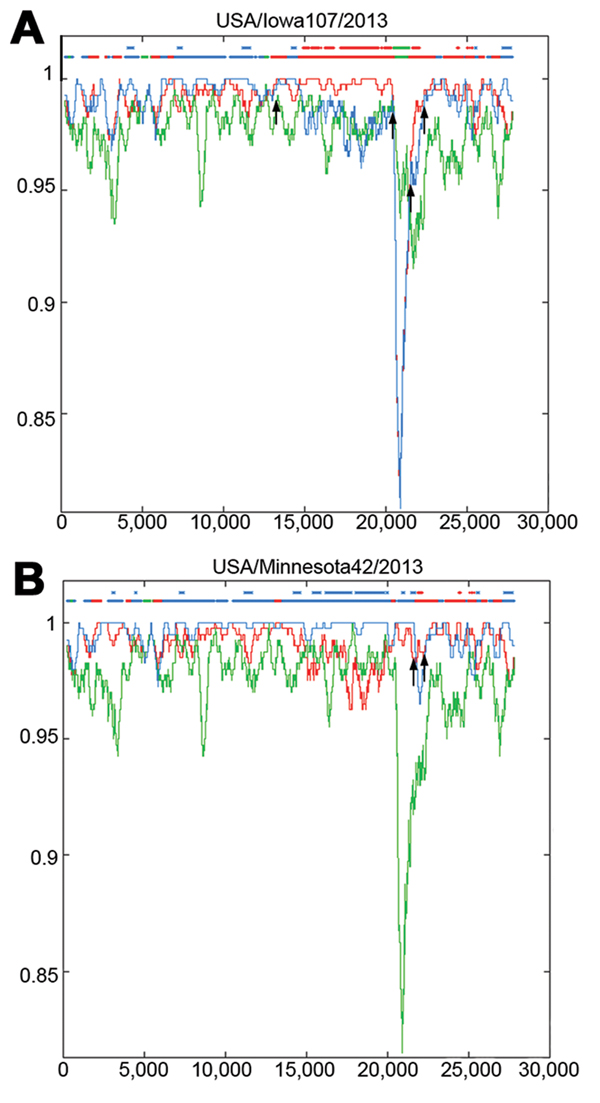Volume 20, Number 10—October 2014
Research
Distinct Characteristics and Complex Evolution of PEDV Strains, North America, May 2013–February 2014
Figure 3

Figure 3. Identification of US porcine epidemic diarrhea virus (PEDV) strains with insertions and deletions in the spike gene as potential recombinant strains. At each position of the window, the query sequence USA/Iowa107/2013 (A) or USA/Minnesota42/2013 (B) was compared with background sequences for 3 strains from China (CH/ZMZDY/11, CH/s, and AH2012). The x-axis represents the length of the PEDV genome, and the y-axis represents the similarity value. The red line represents PEDV strain CH/ZMDZY/11, the green line represents CH/S, and the blue line represents AH2012. When the query sequence is similar to the background sequence(s), the homologous regions are indicated as thick dashed lines (of the corresponding color) on the top of the plot. Arrows represent potential recombination breakpoints.
1These first authors contributed equally to this article.